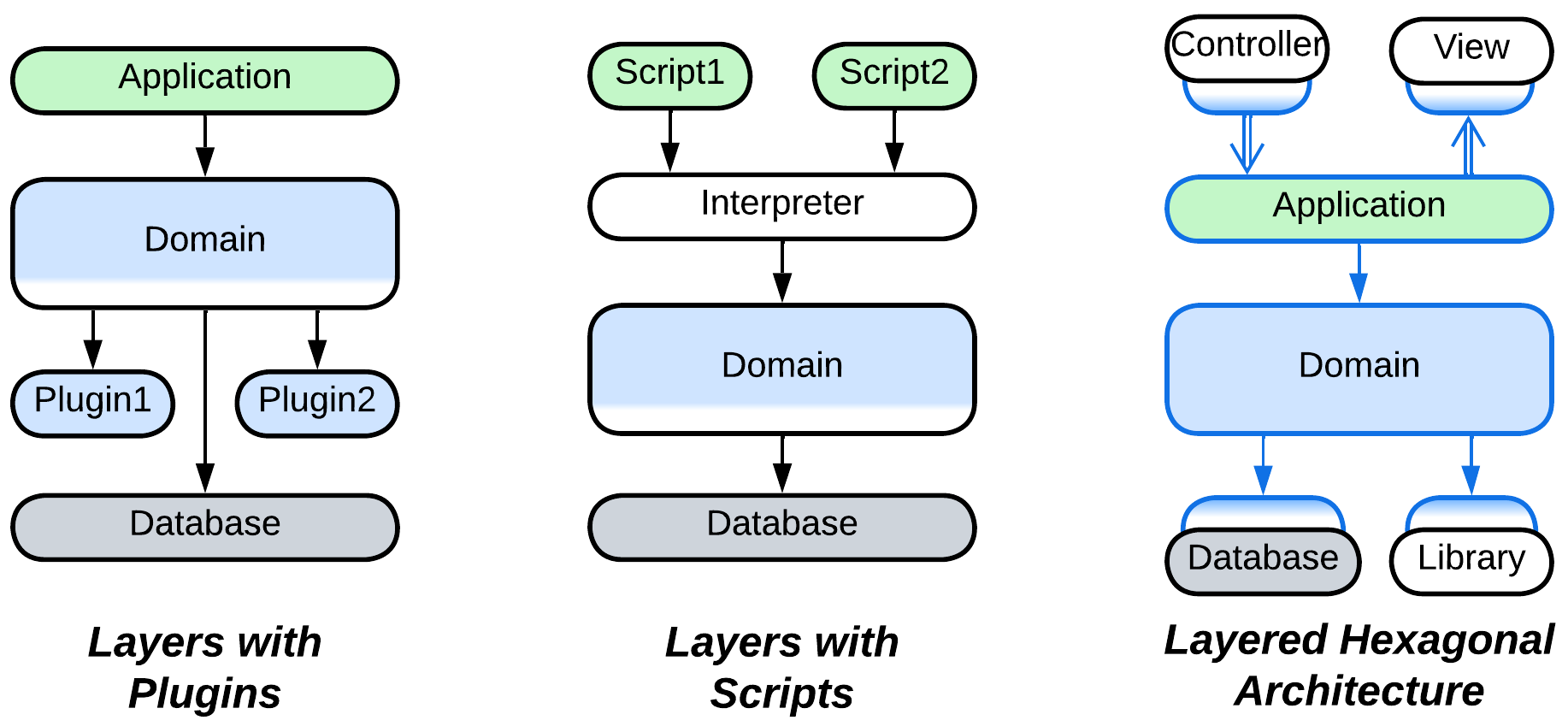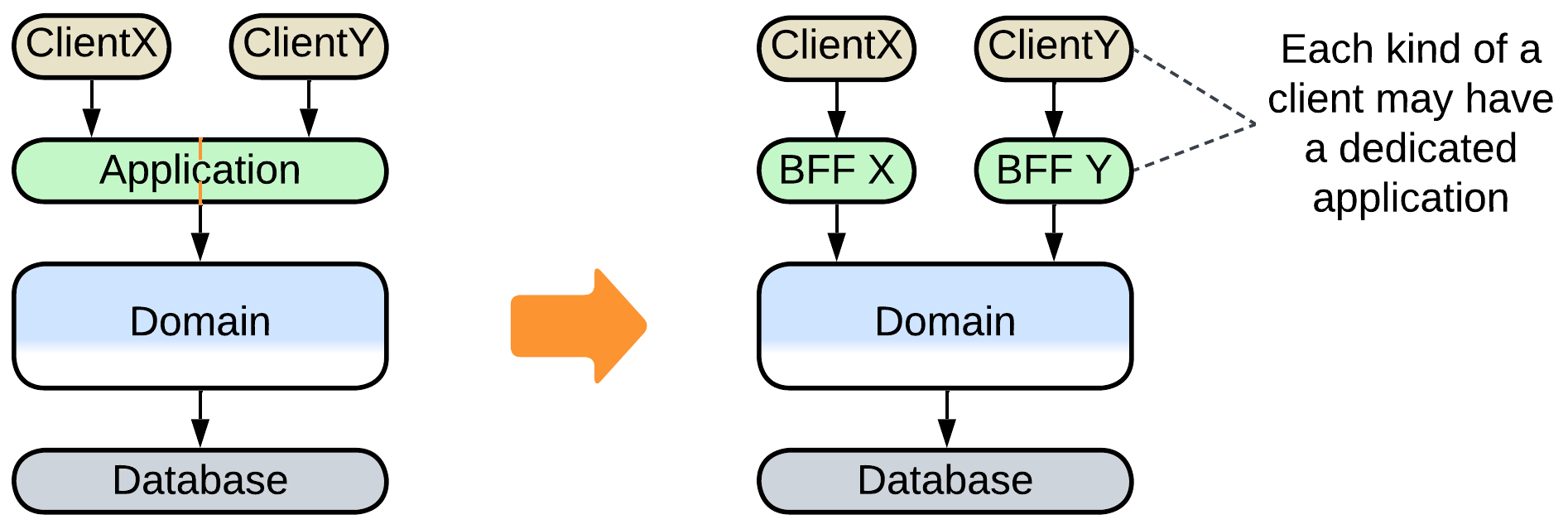Evolutions of Layers to gain flexibility
The last group of evolutions to consider is about making the system more adaptable. We have already discussed the following evolutions for Monolith:
- The behavior of the system may be modified through Plugins.
- Hexagonal Architecture protects the business logic from dependencies on libraries and databases.
- Scripts allow for customization of the system’s logic on a per client basis.

There is also a new evolution that modifies the upper (orchestration) layer:
- The orchestration layer may be split into Backends for Frontends to match the needs of several kinds of clients.
Divide the orchestration layer into Backends for Frontends#

Patterns: Layers, Backends for Frontends aka BFFs.
Goal: let each kind of client get a dedicated development team.
Prerequisite: no high-level logic is shared between client types.
It is possible that your system has different kinds of users, e.g. buyers, sellers, and admins; or web and mobile applications. It may be easier to support a separate integration module per kind of client than to keep all the unrelated code together in a single integration layer.
Pros:
- Each kind of client gets a dedicated team which may choose best fitting technologies.
- You get rid of the single large codebase of the integration layer.
Cons:
- There is no good way to share code between the BFFs (in naive implementation).
- There are new components to administer.
Further steps:
- Evolve the BFFs through adding a shared layer or Sidecars for common functionality.